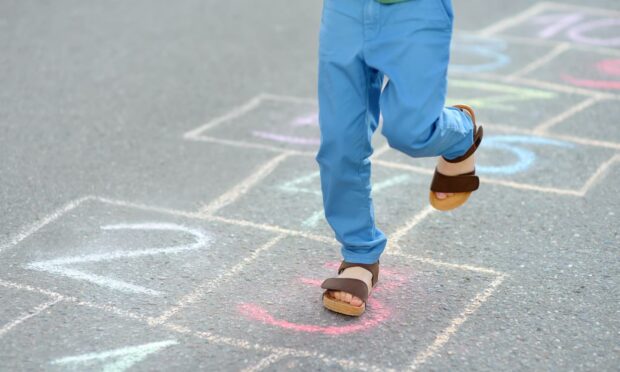What traditional street games did you play as a child?
Grandparents and parents of a certain age will have fond memories of the games they played in the streets around their home.
After one Kirkcaldy street allowed its children to enjoy the same freedoms as previous generations by closing to traffic for a couple of hours, we look back at few of what might have been your favourites.
Five traditional street games
1. Kerby
Two players would stand on the pavement at opposite sides of the road and aim a ball – usually a football but a tennis ball if they had a particularly good aim – at their opponent’s kerb. A direct hit, resulting in the ball bouncing back to the thrower, resulted in a chance to score a second point from closer range in the middle of the road. The game was frequently interrupted by cries of ‘car’ whenever a vehicle approached!
2. Hopscotch
Still a firm favourite in school playgrounds, hopscotch is played by chalking a numbered grid on the ground, alternating between single and double squares. The player throws a stone onto one of the squares and hops on singles squares and jumps with both feet into double squares to retrieve it. The aim is to return to the beginning hopping and jumping without landing on a line or losing balance.
3. What Time is it Mr Wolf?
The player chosen to be Mr Wolf stands facing a wall, with their back to the other players who are lined up a distance away. The other players shout ‘what time is it Mr Wolf?’ and take as many steps forward as the time Mr Wolf chooses, eg. three steps for three o’clock, counting out as they go. At some point Mr Wolf will respond ‘dinner time’ and chase the players back to the start. Anyone he or she catches becomes Mr Wolf.
4. Walley or one touch
A great way to hone football skills, players take it in turns to kick a ball against a chosen section of wall but only get one touch of the ball. They’re out if the ball misses the mark.
5. Kick can
The person who is ‘it’ stands next to a can and the other players hide. He or she tries to find the others but must also guard the can. They must try to tag the other players before they can run back and kick the can.
